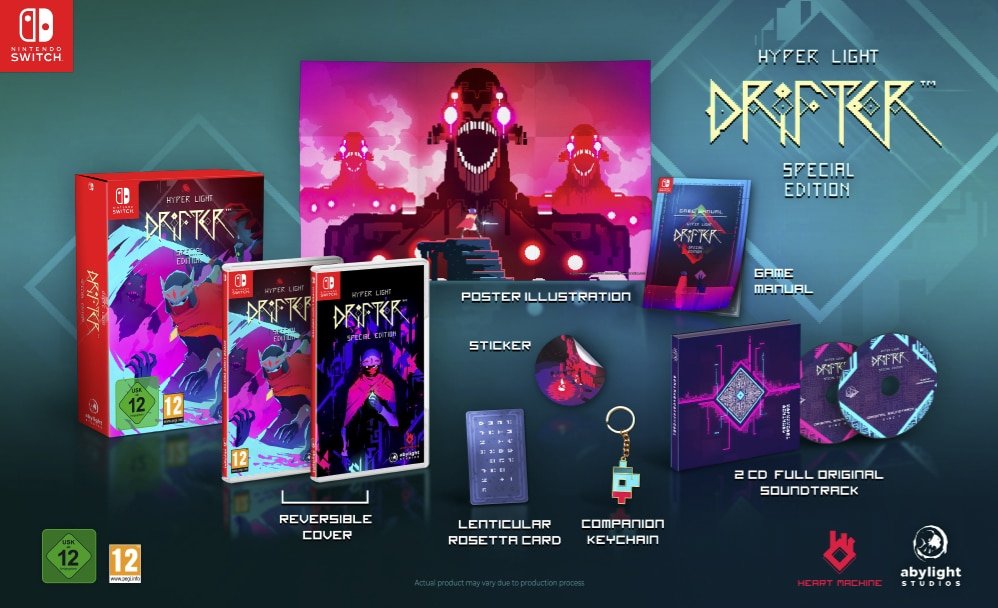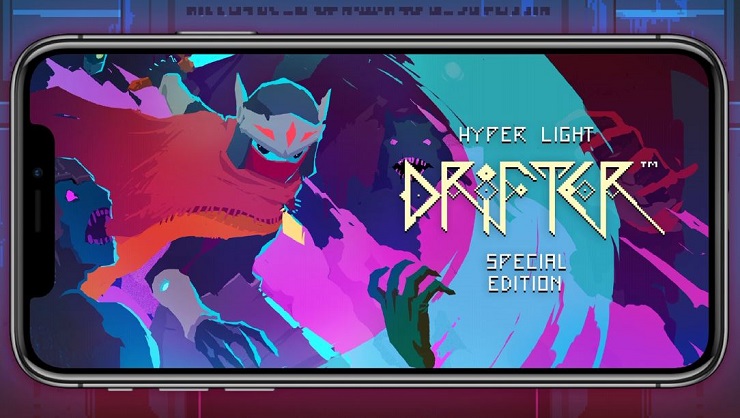
There are several NPCs you can interact with, but rather than exchanging words, they present the player with images which give context and back-story the game’s world and how it got to its current state.

As you traverse the game’s world you’ll meet citizens living in fear, and you’ll see things like bloated corpses floating in the water and piles dead bodies stacked uncomfortably high. A quick glance at the game will more than likely give off the impression that Hyper Light Drifter is a jolly experience akin to Shovel Knight, but beneath its beautifully colored exterior is a grim world filled with death and suffering. Rather than shoving their narrative down the player’s throat, Heart Machine carefully tells their story through poignant use of imagery. Many players may find themselves blasting through the game and not finding very much of a story, but it’s there, and it’s thought provoking. Hyper Light Drifter is a non-verbal experience, and outside of a few sentences that appear onscreen during the game’s short tutorial section, there is no English to be seen or heard. The game’s opening is not only captivating because of its visual flare, but also due to its intentionally cryptic depiction of events. While far from a game-breaker, I can’t help but feel the game could of made better use of shading and shadows to correct any issues with depth perception. Often times I would find myself staring at an object and wondering if it was meant to be above, below, or even with my current level of elevation. It’s jarring to bring such a fast-paced game to a grinding halt because the player can’t figure out why they’re unable to maneuver a certain way, only to realize a second later that the area they are trying to dash to is actually elevated and thus inaccessible.

The game occasionally does a poor job accentuating its depth of field.

The pixelated style is timeless, and Hyper Light Drifter does a fantastic job implementing it, but it isn’t flawless in its execution. The pixelated renaissance began years ago with the rise of the indie game, and while Hyper Light Drifter may not look as sharp as Titan Souls or be as visceral as Hotline Miami, it carves out its own visual identity through its neon-infused color palate, and its assortment of unique enemies. The graphical fidelity carries over from the opening into the moment-to-moment gameplay, successfully creating a myriad of memorable sights to behold. We’re presented with a world in flux we see the rise and fall of titan-like creatures, and we see our protagonist seemingly fail to reach his salvation. Hyper Light Drifter wastes no time hooking its audience, as the game opens with a truly stunning cutscene, using its pixelated art style to create a spectacle the likes of which I’ve never seen before. Their creation, titled Hyper Light Drifter, both looks and feels the part, but does it have the staying power to cleave through the dozens of other retro-inspired games popping up at every turn? Inspired by The Legend of Zelda: A Link to The Past and other SNES classics, Alex Preston and his crew over at Heart Machine set out to create an experience that harkens back to an era of gaming long past.


 0 kommentar(er)
0 kommentar(er)
